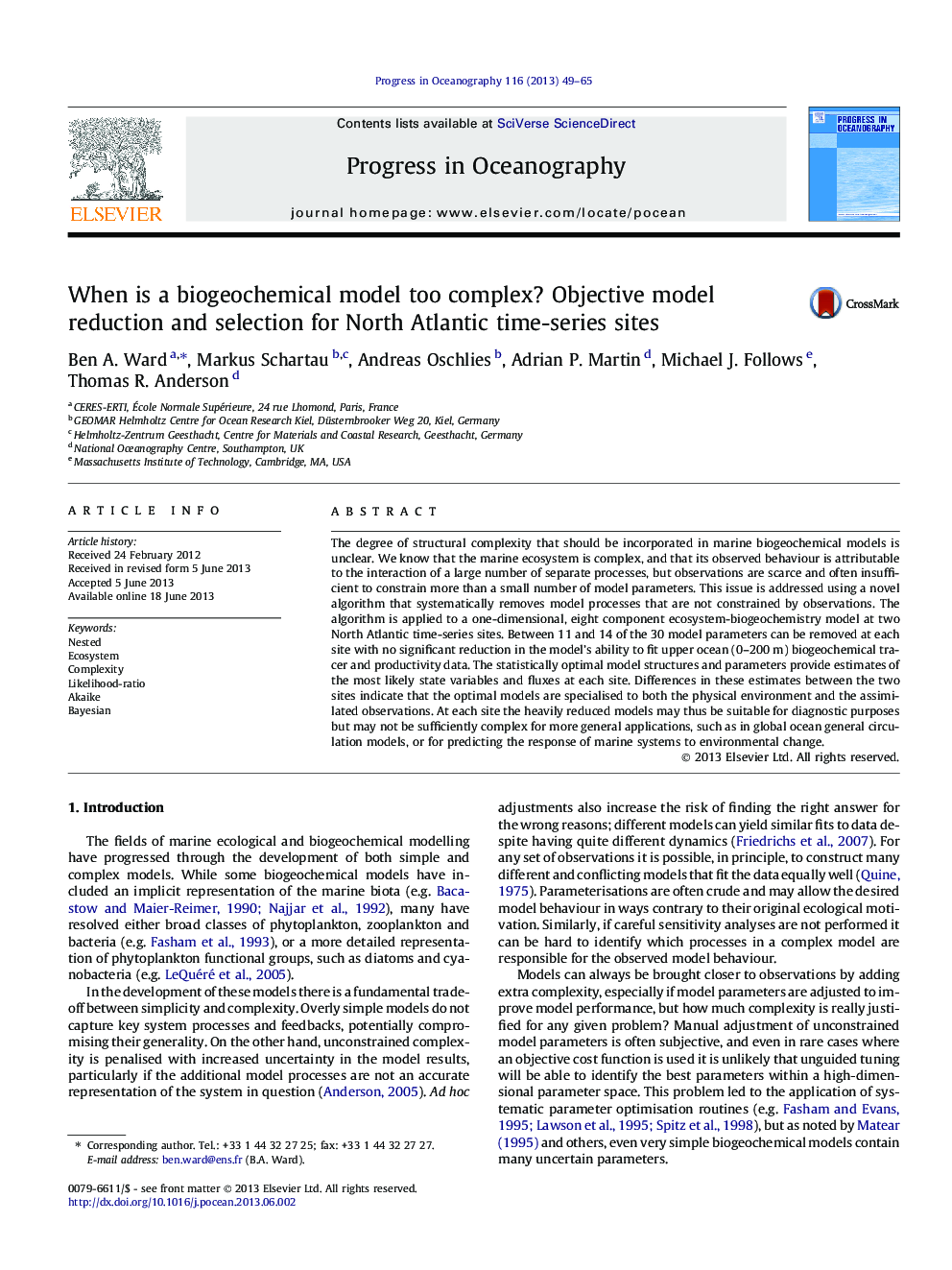| کد مقاله | کد نشریه | سال انتشار | مقاله انگلیسی | نسخه تمام متن |
|---|---|---|---|---|
| 4553150 | 1627939 | 2013 | 17 صفحه PDF | دانلود رایگان |

• We objectively identify and remove unconstrained parameters from a marine ecosystem model.
• Optimal model complexity is identified using three model selection metrics.
• As many as 14 of the model’s 30 parameters can be removed, with no significant reduction in model-data misfit.
• Optimal model structures and parameters are different at two different North Atlantic locations.
• The specialised structures and parameters at each site may be unsuitable for new environments.
The degree of structural complexity that should be incorporated in marine biogeochemical models is unclear. We know that the marine ecosystem is complex, and that its observed behaviour is attributable to the interaction of a large number of separate processes, but observations are scarce and often insufficient to constrain more than a small number of model parameters. This issue is addressed using a novel algorithm that systematically removes model processes that are not constrained by observations. The algorithm is applied to a one-dimensional, eight component ecosystem-biogeochemistry model at two North Atlantic time-series sites. Between 11 and 14 of the 30 model parameters can be removed at each site with no significant reduction in the model’s ability to fit upper ocean (0–200 m) biogeochemical tracer and productivity data. The statistically optimal model structures and parameters provide estimates of the most likely state variables and fluxes at each site. Differences in these estimates between the two sites indicate that the optimal models are specialised to both the physical environment and the assimilated observations. At each site the heavily reduced models may thus be suitable for diagnostic purposes but may not be sufficiently complex for more general applications, such as in global ocean general circulation models, or for predicting the response of marine systems to environmental change.
Journal: Progress in Oceanography - Volume 116, September 2013, Pages 49–65